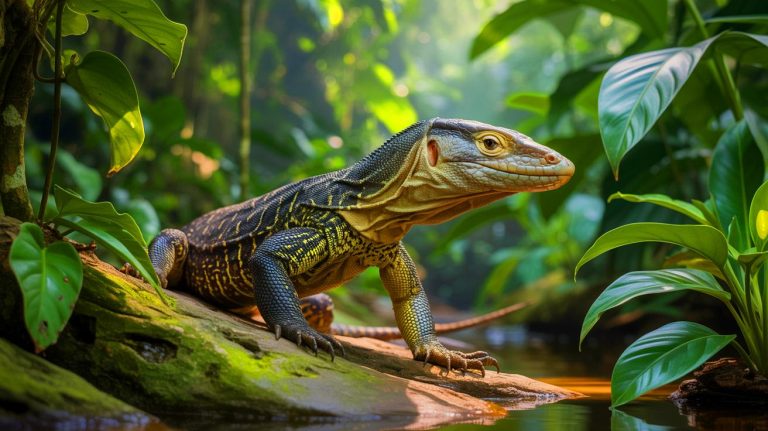| IN A NUTSHELL |
|
In the lush, dense rainforests of Borneo resides a creature so elusive that it captures the fascination of scientists and nature enthusiasts alike. Known as the earless monitor lizard, or Lanthanotus borneensis, this enigmatic reptile is often referred to as a “mini-dragon” due to its mythical appearance and secretive behavior. Despite its real-world existence, observing this species in its natural habitat poses a significant challenge for researchers. As we delve into the mysteries of this unique reptile, we uncover the factors that contribute to its rarity and the threats it faces in today’s rapidly changing world.
A Living Relic of the Cretaceous
The earless monitor lizard is often described as a living fossil, a term that underscores its ancient lineage. This reptile shares a common ancestor with species that roamed the earth over 66 million years ago, placing it among the last surviving members of its family, the Lanthanotidae. The lizard’s evolutionary history is a testament to its resilience, having survived massive ecological shifts that led to the extinction of countless other species.
Despite its survival through millennia, the earless monitor lizard is now classified as an endangered species. Human-induced threats such as habitat destruction due to deforestation pose a significant risk to its continued existence. The illegal trade in exotic animals further exacerbates this threat, as the lizard’s rarity and unique appearance make it a prized target for collectors. Conservation efforts are crucial to protect this ancient species from disappearing entirely.
The Secrets of an Elusive Reptile
The earless monitor lizard’s cryptic lifestyle makes it a challenging subject of study. Nocturnal by nature, it spends daylight hours hidden beneath leaf litter or rocks along forest streams. This behavior not only enhances its survival by avoiding predators but also complicates efforts to observe and understand its habits and ecology.
Researchers rely on patience and innovative methods to track these elusive creatures. Some employ camera traps and environmental DNA sampling to gain insights into the lizard’s behavior and distribution. Despite these advancements, much about the earless monitor lizard remains a mystery, fueling ongoing scientific curiosity and highlighting the need for continued research and conservation initiatives.
Threats Facing the Earless Monitor Lizard
The survival of the earless monitor lizard is imperiled by a variety of threats. Deforestation in Borneo, driven by logging and agricultural expansion, leads to the loss of its natural habitat. As the rainforest canopy diminishes, so does the availability of shelter and food sources critical for the lizard’s survival.
In addition to habitat loss, the illegal wildlife trade poses a grave danger. Despite strict laws prohibiting its capture and sale, the high demand from collectors continues to drive illegal activities, further reducing wild populations. Climate change also threatens to alter the delicate balance of the lizard’s environment, potentially affecting its ability to thrive.Conservation and the Future
Efforts to conserve the earless monitor lizard are ongoing, with a focus on protecting its natural habitat and curbing illegal trade. Conservationists are working with local communities to promote sustainable practices and increase awareness of the lizard’s plight. By preserving the rainforests of Borneo and enforcing wildlife protection laws, there is hope for the survival of this remarkable species.
As we continue to uncover the mysteries of the earless monitor lizard, one question remains: Can humanity balance its development goals with the need to protect such unique and irreplaceable creatures?
Did you like it? 4.6/5 (28)









Wow, a real-life mini-dragon? That’s amazing! 🐲
How can I help with conservation efforts for this fascinating creature?
Is there any chance of seeing these lizards in a zoo?
Why haven’t I heard of this lizard before? More people should know about it!
What do they eat in the wild? Do they have any predators?
It’s sad to see how deforestation is affecting such unique species. 😢
Do these lizards change color like chameleons?
How big do these “mini-dragons” actually get?
Thank you for shedding light on this creature. I had no idea it existed!
Are there any documentaries about the earless monitor lizard?
Is climate change affecting other species in Borneo as well?